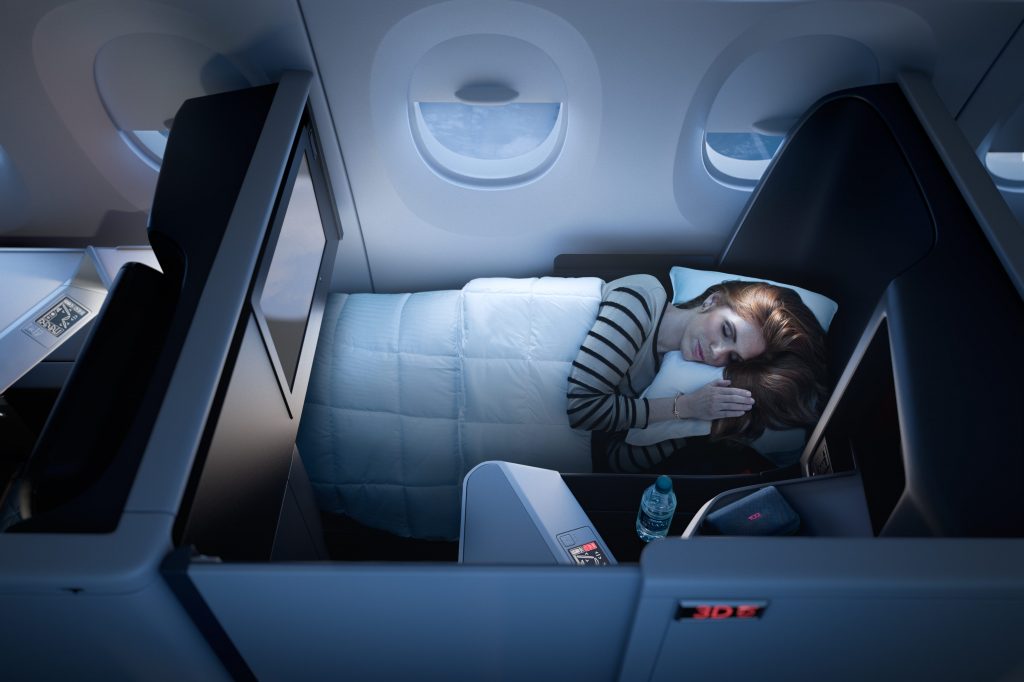Skift Take
The lenses through which we view the travel ecosystem are often heavily distorted. The first step toward countering it is acknowledgement.
It can be fascinating — and frustrating — to see how premium airline products get marketed, how the media covers launches, and the ever-increasing role of influencers in propagating brand messages through perfectly stylized Instagram posts.
But, as media and platforms grow more complex, it is also worth dissecting the lenses that we use to view the travel industry, and this dynamic, in particular. Sometimes they can be incredibly distorted without us really paying too much thought.
Ben Schlappig, who writes the blog One Mile at a Time, travels around the world reviewing some of the best products in the sky. It is a clever mousetrap he has created from a blog replete with affiliate links to mileage bonus credit cards; the ability to game ever-tightening points and loyalty systems, and generally operate at a level that others can’t.
Schlappig is one of the most objective reviewers of these products around. He knows his subject matter, and is above the “freebie fray.” He is thoughtful about service design, and the hard product, as well as nearly every element of the brand. His is obsessive coverage of an entire ecosystem, and worth reading if you care where you allocate your travel spend.
In a recent post, Schlappig argued that most of the media coverage of first class products is basically fake. The people writing the reviews and the rankings often haven’t actually flown the products. They use beautiful, marketing-produced images, and adhere to bullet points provided by public relations departments.
An Esquire Review That Lacked Critical Thought
A recent piece commissioned by Esquire finds Dwight Garner breathlessly praising Emirates after being upgraded to first class. Sure, the product is decadent — world-class, even — and there’s nice champagne. But there was also no critical thought in the piece, something that you would expect from a publication with journalistic bonafides like Esquire.
Here was a journalist neutered of the thought and objectivity that journalism should be about in a storied publication, gaffawing about bubbly, lobster and a live orchid in the cabin, replete with mile high club references. It is as if the lack of oxygen created a thought vacuum. I’m not calling out any impropriety; let people enjoy their upgrades as they get them. However, it did seem like yet another echo in the chamber of how these products are discussed in the media.
Casey Neistat’s Annoying Reviews
Don’t get me started about Casey Neistat’s annoying reviews of top carriers, and his insistence that it is sheer luck and coincidence he is being upgraded on these flights. The kabuki dance goes on. Brands know exactly what they are doing, and 50 million views later, the hard yards of a full scale marketing campaign have been run. Let’s not pretend it this is entirely organic and free-spirited. It is very calculated to the bone.
Also, as more digital publications pivot to video, they realize it is hard and expensive to produce the type of content that people want to see. The solution? Lean heavily on nicely produced b-roll provided by brands’ marketing and communications departments.
Case in point: This is a hacked together Business Insider slide show about a new Delta product using perfect brand imagery. Sure, sometimes there is the question of expediency, or showing a product that isn’t in service yet, but when you extrapolate this tactic out a bit, it can distort the lens significantly.
Omnipresent Influencers
Elsewhere, influencers are omnipresent in travel today. And while at one point they may have represented an interesting form of conversational media, one gets the sense that things have tilted out of whack. It is a pay-to-play medium, where people are getting insane amounts of travel comped, and celebrity treatment all for a few Instagram posts.
Brands need to start looking a bit closer at what these tactics are actually providing for them, as it would seem there are diminishing returns and falsely inflated numbers. But when you see the marketing recap slides in a presentation, the superficial number with lots of zeros behind it seems to satiate less-savvy marketing executives.
No bother if the influencers audience skews heavily on 16 year olds in a far-off country. Also, their output also distorts the lens, as it is hugely stylized.
Faux Fare Mistakes
This isn’t just media and marketing. A friend confided to me that some carriers are staging faux “fat finger” fare sales. Where marketing and public relations are spun up across the travel ecosystem to make it seem like there is a mistake fare. When it reality it has been incredibly calculated.
Travel is one of the most vibrant, incredibly creative industries. It is a pleasure to think about and cover. But more critical thought is needed from the entire ecosystem if it is to be made truly efficient, and for consumers to reward the best brands, places, products, and services with their hard-earned dollars and euros.
The Daily Newsletter
Our daily coverage of the global travel industry. Written by editors and analysts from across Skift’s brands.
Have a confidential tip for Skift? Get in touch
Tags: bloggers, influencers, marketing
Photo credit: Marketers sometimes use over-the-top unrealistic imagery to tout their products. Pictured is a utopian image of the Delta One Suite. Delta Air Lines
